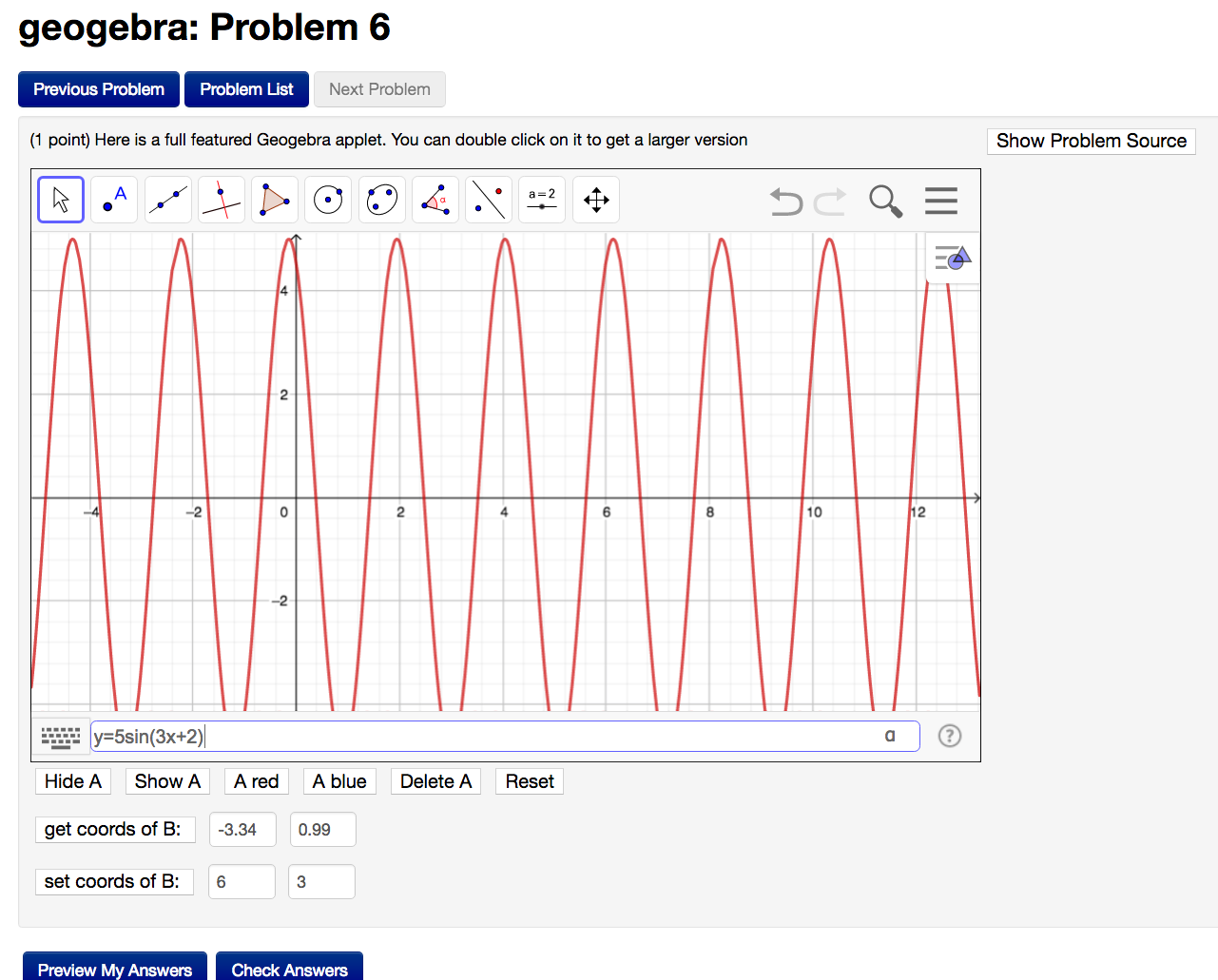have been fascinated by some interactive graphics written using either JavaScript or GeoGebra.
unfortunately, learning how to construct such applications is difficult for me. I'd appreciate some help pointing me in the right direction for the novice that I am.
A big hurdle for many of the ECE instructors for using Webwork is the lack of the capability to draw/sketch a waveform, It is common to ask the students to draw/sketch the output of a system given a known input, e.g., a sine wave of frequency f, phase p and amplitude a. The example of the draw derivative from CSU shows the ability to draw a curve free hand and compare it to a given answer.
I suspect that the same capability is available in GeoGebra.
I'd like to construct a simple example of having the student sketch a sinusoid of a given frequency and compare it to the actual function - using the simplest possible method.
Is this reasonably easy to do with appropriate learning? And if so, can you point me in the right direction? I've got a couple of TA who are better than I at coding but I need to know how to do this, too.
